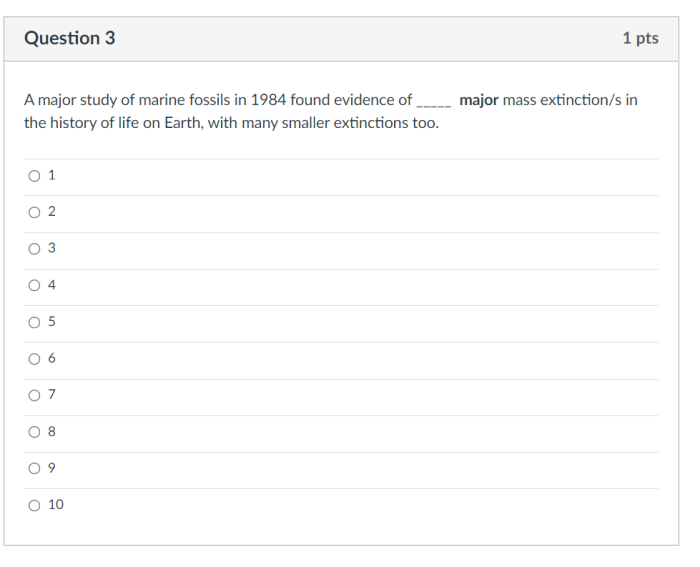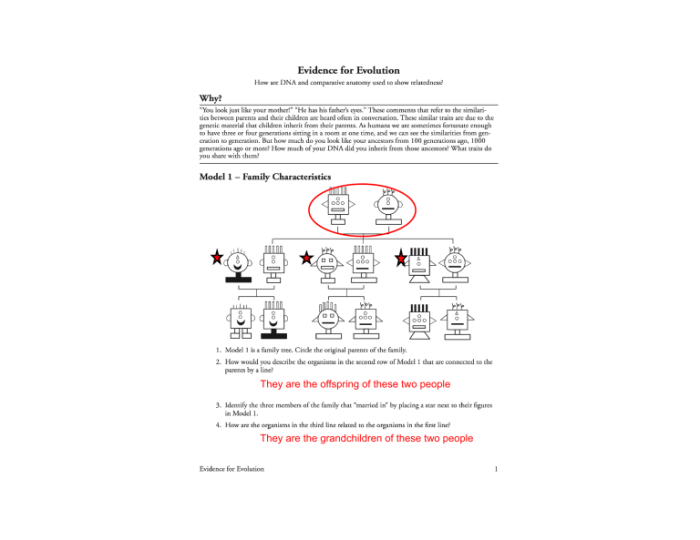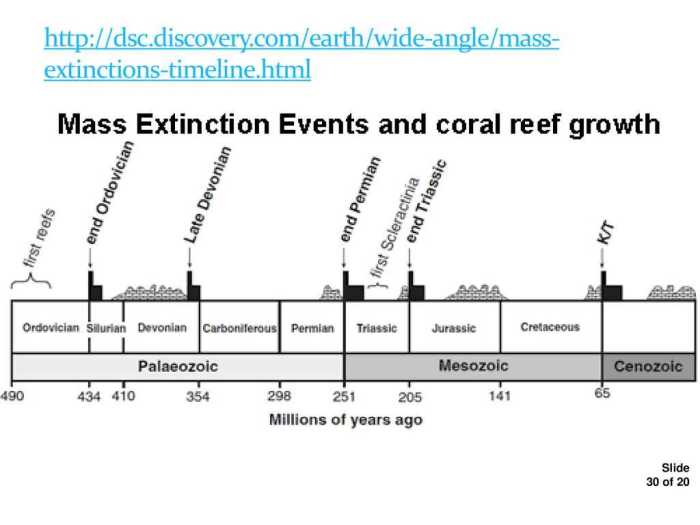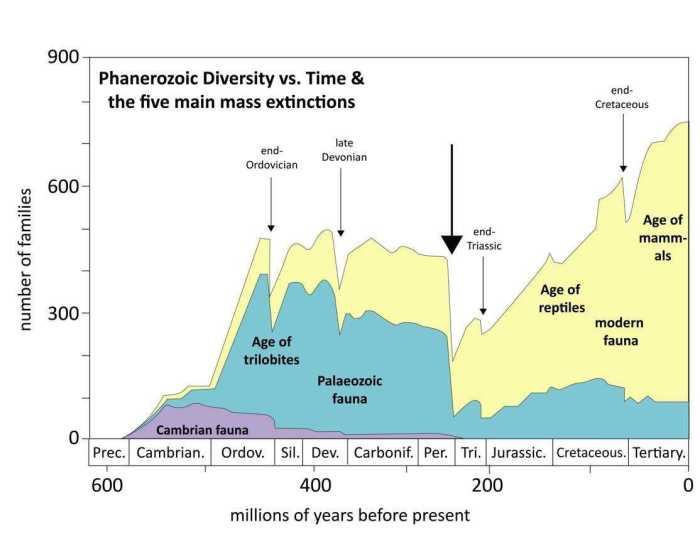Introducing the mass extinction pogil answer key, a comprehensive guide that unlocks the mysteries of mass extinction events. This key provides an in-depth exploration of the evidence, causes, consequences, and current risks associated with these catastrophic events, offering a profound understanding of their impact on the history of life on Earth.
Delving into the depths of mass extinction, we uncover the various types of evidence used to reconstruct these events, including fossil records, geological formations, and isotopic anomalies. By examining the potential causes of mass extinctions, from volcanic eruptions to asteroid impacts, we gain insights into the complex interplay of factors that can trigger these global crises.
Mass Extinction POGIL Activity Overview

The Mass Extinction POGIL activity aims to enhance students’ understanding of the causes and consequences of mass extinction events.
The activity comprises three sections: an introduction to mass extinction, a data analysis exercise, and a discussion of the implications of mass extinction for the future of life on Earth.
Key Concepts Covered
- The definition and characteristics of mass extinction events
- The different theories proposed to explain the causes of mass extinction
- The ecological and evolutionary consequences of mass extinction
- The potential for future mass extinction events
Mass Extinction Evidence and Causes

Mass extinctions are periods of rapid and severe biodiversity loss that have occurred throughout Earth’s history. Studying mass extinctions provides insights into the processes that shape the evolution of life on our planet.
Evidence of Mass Extinctions
- Fossil record:Abrupt disappearance of species in fossil sequences, followed by the appearance of new species.
- Geochemical signatures:Changes in the abundance of elements and isotopes, such as iridium anomalies (indicating extraterrestrial impacts) or carbon isotope excursions (indicating changes in the global carbon cycle).
- Stratigraphic sequences:Distinct geological layers that record mass extinction events, such as boundary layers marked by high concentrations of impact debris or volcanic ash.
Causes of Mass Extinctions
The causes of mass extinctions are complex and multifaceted, and multiple factors may contribute to a single event.
- Extraterrestrial impacts:Collisions with large asteroids or comets can release immense energy, causing global wildfires, tsunamis, and atmospheric disruption.
- Volcanic eruptions:Large-scale volcanic activity can release vast amounts of ash and gases, blocking sunlight, altering the climate, and acidifying the oceans.
- Climate change:Rapid changes in global temperature or sea level can disrupt ecosystems and lead to the extinction of species that cannot adapt.
- Sea-level fluctuations:Changes in sea level can inundate or expose habitats, leading to the extinction of species that rely on specific coastal environments.
li> Disease outbreaks:Widespread epidemics can decimate populations, particularly in isolated or vulnerable ecosystems.
Examples of Mass Extinction Events
- End-Permian Extinction (252 million years ago):Caused by volcanic eruptions and climate change, leading to the extinction of over 90% of marine species and 70% of terrestrial species.
- End-Triassic Extinction (201 million years ago):Caused by volcanic eruptions and climate change, resulting in the extinction of over 50% of marine species and 20% of terrestrial species.
- End-Cretaceous Extinction (66 million years ago):Caused by an asteroid impact, leading to the extinction of dinosaurs and over 75% of plant and animal species.
Consequences and Impacts of Mass Extinctions: Mass Extinction Pogil Answer Key

Mass extinctions have profound ecological and evolutionary consequences, significantly altering the course of life’s history on Earth. These events result in the loss of numerous species, disruption of ecosystems, and the creation of opportunities for new lineages to emerge.
Ecological Consequences
- Loss of Biodiversity:Mass extinctions lead to the disappearance of a vast number of species, reducing the overall diversity of life on Earth.
- Ecosystem Disruption:The loss of key species disrupts ecosystem structure and function, leading to cascading effects throughout the food web and nutrient cycles.
- Changes in Food Webs:Mass extinctions can alter the composition of food webs, as the loss of certain species creates opportunities for other species to expand their niches.
Evolutionary Consequences
- Natural Selection:Mass extinctions exert strong selective pressures, favoring species that possess traits that enhance their survival under extreme conditions.
- Adaptive Radiation:Following mass extinctions, surviving species often undergo rapid adaptive radiation, diversifying into new niches and filling the void left by extinct species.
- Evolutionary Stasis:In some cases, mass extinctions can lead to evolutionary stasis, where surviving lineages show little change over extended periods due to the lack of competition.
Impacts on Biodiversity and Ecosystem Stability
Mass extinctions have significant implications for biodiversity and ecosystem stability. The loss of numerous species reduces the genetic diversity and resilience of ecosystems, making them more susceptible to environmental changes and disturbances.
Examples
- Great Dying (Permian-Triassic Extinction):The largest mass extinction event in Earth’s history, it wiped out approximately 96% of marine species and 70% of terrestrial vertebrate species, opening the way for the rise of dinosaurs.
- Cretaceous-Paleogene (K-Pg) Extinction:The impact of an asteroid or comet caused the extinction of non-avian dinosaurs and many other species, creating an ecological vacuum that allowed mammals to flourish.
Current and Future Mass Extinction Risks

Mass extinctions have occurred throughout Earth’s history, but the current rate of species loss is unprecedented and largely attributed to human activities. Identifying and mitigating these threats are crucial for preserving biodiversity and maintaining the health of our planet.
Human activities, such as habitat destruction, overexploitation, pollution, and climate change, are driving the current mass extinction event. Habitat loss and fragmentation isolate populations, reduce genetic diversity, and disrupt ecological interactions. Overexploitation through hunting, fishing, and logging removes species from ecosystems faster than they can recover.
Pollution
Pollution, including plastic pollution, chemical contamination, and noise pollution, degrades habitats, disrupts ecosystem functions, and accumulates in the food chain. Plastic pollution, in particular, poses a significant threat to marine life, as it can be ingested, entangled, or mistaken for food.
Climate Change, Mass extinction pogil answer key
Climate change alters habitats, disrupts species’ ranges, and intensifies extreme weather events. Rising temperatures, changes in precipitation patterns, and ocean acidification can lead to habitat loss, reduced food availability, and increased vulnerability to disease. Species that are unable to adapt or migrate face a high risk of extinction.
Strategies and Conservation Efforts
Mitigating the risks of future mass extinctions requires a multifaceted approach. Conservation efforts should focus on protecting and restoring habitats, reducing pollution, managing overexploitation, and mitigating climate change.
- Protected Areas:Establishing and effectively managing protected areas, such as national parks and wildlife sanctuaries, provides safe havens for species and safeguards their habitats.
- Habitat Restoration:Restoring degraded habitats through reforestation, wetland restoration, and other conservation measures helps to increase biodiversity and support species recovery.
- Pollution Reduction:Implementing regulations to reduce pollution from industries, agriculture, and transportation is essential for protecting ecosystems and species health.
- Sustainable Use:Promoting sustainable practices in fishing, hunting, and logging ensures that species are harvested at levels that allow populations to recover and persist.
- Climate Change Mitigation:Reducing greenhouse gas emissions through renewable energy, energy efficiency, and carbon capture technologies is crucial for mitigating the impacts of climate change on biodiversity.
By implementing these strategies and conservation efforts, we can reduce the risks of future mass extinctions and preserve the incredible diversity of life on Earth.
Q&A
What is the primary evidence used to study mass extinctions?
Fossil records provide the most direct evidence of mass extinctions, revealing the disappearance and appearance of species over time.
What are the main theories proposed to explain the causes of mass extinctions?
Asteroid impacts, volcanic eruptions, climate change, and disease outbreaks are among the leading theories proposed to explain the causes of mass extinctions.
How have mass extinctions shaped the history of life on Earth?
Mass extinctions have played a significant role in shaping the diversity and distribution of life on Earth, creating opportunities for new species to evolve and diversify.